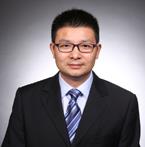Invited Speakers---Dr. Zhe Wang

Professor, Tsinghua University, China
Zhe Wang, professor of the Department of Energy and Power Engineering, Tsinghua University, China. His research interest is the fundamental, quantification, and application of Laser induced breakdown spectroscopy (LIBS). He has published more than 70 papers and was granted with 25 patents. The research results have been applied in fast coal quality analysis, metal analysis, on-line measurement of cement raw quality etc.. He is the member of the International Scientific Committee of LIBS and vice-chairman of the 8th, 9th and 11th International Conferences of LIBS.
Speech Title: Quantification technology of Laser-induced Breakdown Spectroscopy and Application to Different Fields
Aims: Laser-induced breakdown Spectroscopy (LIBS) has been regarded as the “future superstar” of chemical analysis and shown great potential in different fields.. However, severely hindered by its quantification performance of low repeatability and accuracy, LIBS was not able to realize wide commercialization. The aim of this work is to develop a set of methods to improve the quantification performance of LIBS without increasing the complexity and cost of the system.
Methods: 1) The plasma modulation technology (spatial confinement, confinement and electric discharge, beam shaping) was proposed to improve the signal repeatability and intensity. 2) The spectrum standardization method was proposed to further improve the signal repeatability by compensating the plasma parameters mathematically. 3) The dominant factor based partial least squares (PLS) model was proposed to reduce the matrix effect and improve the measurement accuracy, and this model was further integrated with spectral identification method based on adaptive database to improve the measurement reproducibility. 4) The blackbody radiation reference method was used to correct the self-absorption. Finally, a set of quantification methods was developed.
Results: Using the proposed quantification methods for coal analysis, the average measurement errors of carbon, hydrogen, ash, volatile matter and calorific value were 0.42%, 0.05%, 0.17%, 0.07% and 0.07MJ/kg, respectively, which were significantly better than the conventional PLS model of 4.9%, 0.33%, 5.04%, 1.78%, 1.80MJ/kg. The relative standard deviation (RSD) of the measured results was reduced to about 1/10 of the conventional PLS model. The proposed quantification methods were also successfully applied in steel analysis, cement analysis and nephrite provenance identification and showed great improvement in repeatability and accuracy.
Conclusions: The proposed quantification methods significantly improved the repeatability and accuracy of LIBS and can be universally applied in different fields.

